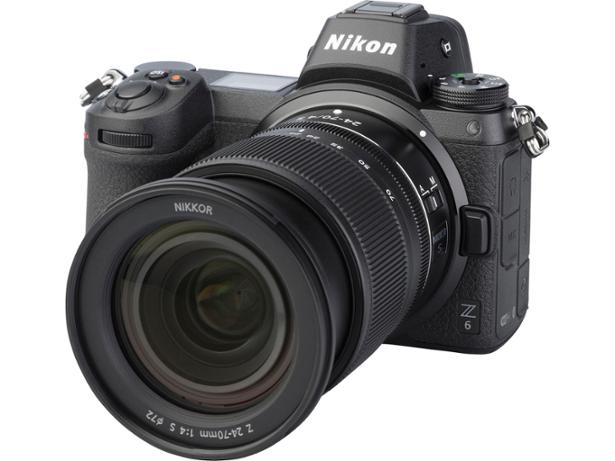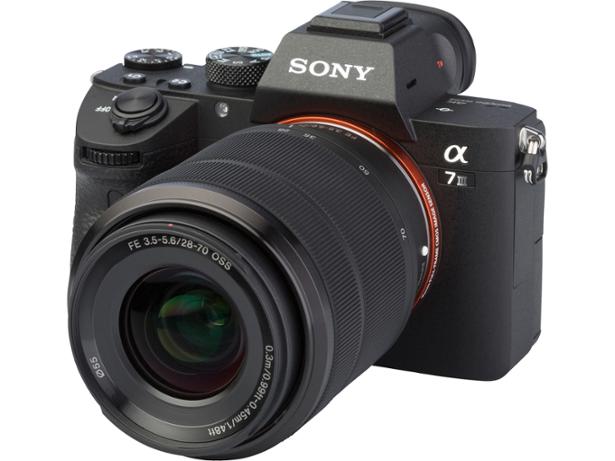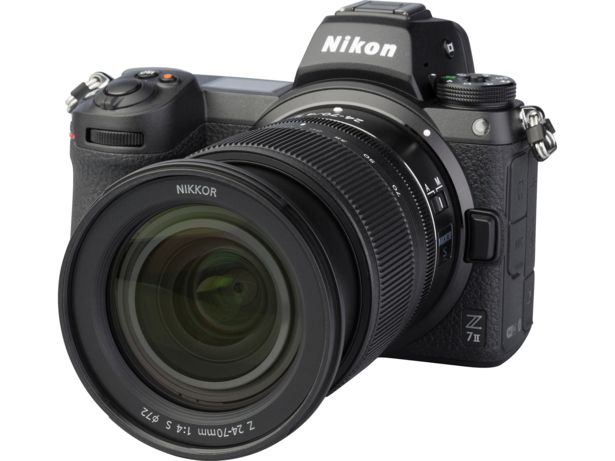By clicking a retailer link you consent to third-party cookies that track your onward journey. If you make a purchase, Which? will receive an affiliate commission, which supports our mission to be the UK's consumer champion.
How to buy the best camera phone

Camera quality is now a major consideration for phone buyers who want to take crisp, dynamic photos and video footage.
The rise of photo-sharing apps and cloud storage has also meant you can store thousands of photos taken on a tiny device, and share them instantly with friends, family and followers.
We highlight the key things to look out for when choosing a camera phone and how to take great smartphone pics – and explore whether smartphone cameras are really good enough to replace 'proper' cameras.
Alternatively, you can head straight over to our best smartphones guide to see our expert pick of the top smartphone cameras.
What should I look for when buying a camera phone?
1. Sensor size
Smartphones are limited in sensor size because the devices are so small, but sizes over 1in are now available and these can provide quality to rival some standalone compact cameras. Sensor size is one of the biggest determining factors of image quality in any camera.
To learn more about sensor sizes, check out our digital camera buying guide.
2. Number of megapixels
There was a time when mobile phones marketed higher megapixels to suggest higher quality, but it's not that straightforward. The Samsung S22 Ultra sports a massive 108Mp main lens, something that's also present on the S20 Ultra and S21 Ultra. But ask yourself why Apple, which is also renowned for excellent cameras, opted for a 12MP main lens on the rival iPhone 13 Pro Max.
While a high megapixel count can be an indication of quality, it shouldn't be relied on to justify a purchase. Things like sensor size and pixel size are also important to consider and have a great effect on image quality.
3. Wide-angle lenses

In the simplest terms, a wide-angle lens allows you to fit more into a picture, giving you more perspective. This type of lens is particularly useful when taking photos of scenery.
Unlike traditional DSLR and mirrorless cameras, smartphones can suffer from some distortion when trying to take wide-angle shots, but they are still able to capture some great pictures. Using a wide angle lens to capture images that include converging lines (lines that appear to get closer as you move further away from them) can create high levels of depth in photos.
4. Telephoto lenses
Over the past few years, more and more smartphones being released have a telephoto lens alongside regular lenses. These allow a much greater clarity of photo when zooming in on faraway objects.
As most modern smartphone photography takes images with different lenses, and then uses internal software to stitch them together into one final photo that can be viewed and shared, a telephoto lens is also great for creating the impression of depth in the background – think of Apple's portrait mode, which wouldn't be possible without a telephoto lens.
Some high-end phones also have a 'periscope lens', which is effectively a way of arranging telephoto lenses so that they have more space to move, and extends the optical zoom range significantly. The Samsung Galaxy S22 Ultra has a periscope telephoto camera than can give an astonishing 10x optical zoom.
5. 4K & 8K video quality
Most premium phones can now record video in 4K quality, which allows for a tremendous amount of detail and great flexibility when editing footage; 8K is the next frontier, and despite the fact that monitors or televisions capable of displaying content in 8K resolution are hard to come by, some manufacturers are already introducing the option of shooting in 8K to their flagship models. While this isn't likely to be particularly useful right now, selecting a model with this capability could be a good way of futureproofing your mobile and your footage, ensuring that you'll keep up with developments in the displays of monitors and televisions.
It is worth noting that the size of 8K footage is still a big problem – a two-minute-long video shot in 8K will have a file size of well over 1GB.

Four useful features you can find in your smartphone's camera
Smartphone cameras have other useful tricks up their sleeve that can help improve your photography, and you shouldn't have to pay a premium for an expensive model to find them.
1. Burst mode
Burst mode allows you take a series of photos in quick succession, typically used when capturing action shots. With normal photos, when a camera shutter stays open for longer, it is able to let more light into the sensor, which creates a sharp and detailed image. The difficulty with action shots is that when the subject moves, it alters the light coming into the camera sensor, creating a blurred effect, so there needs to be a good balance of enough light and quick-enough shutter speed so the changes in light don't disrupt the picture quality.
By using a wide aperture, quick shutter speed and making sure light still comes into the sensor to produce detailed images, burst mode is able to create several high-quality images within milliseconds of each other. Apple's iPhones with iOS 7 or later have burst mode as a standard feature on their default camera app, which is activated by holding down the shutter button. Many Android phones have it as well, or you can download a trusted third-party app from your phone's app store.
2. Self-timer
A much less technical but nonetheless useful feature, the self-timer allows you to prepare your phone to take a picture up to 10 seconds in advance. This is useful if you're taking selfies with family or friends, or trying to position yourself to get the perfect close-up.
On Apple iPhones, the self-timer actually works alongside burst mode. Once the timer is complete, your camera automatically takes 10 photos in quick succession and you are able to choose your favourite one to save.
3. Advanced modes
You may not have come across some of the different modes that you can adjust to improve the quality of your smartphone pictures. Here are some adjustments you can make on your smartphone to customise your pictures:
- Exposure: By manually adjusting the exposure in a picture, you can dictate how bright you want the image to be.
- Aperture: Aperture describes the opening within a lens that lets light through. You may have seen it expressed in f/stops, followed by a number such as 'f/1.4'. A lower f/stop means the opening of the lens is larger, resulting in a blurrier background as more light has entered the image.
- ISO: ISO is a measure of how sensitive the image sensor is. The higher the ISO number, the more sensitive your camera lens is to light – which is ideal in darker situations. You can adjust the ISO number on your smartphone manually.
4. Location tagging
If you're an avid restaurant-goer or traveller, using the location tag on your photos is the ideal way to make sure you don't forget where some of your favourite moments were captured. By enabling your camera app to save your location, which is essentially capturing GPS data, your phone automatically saves the location you were at when that photo was taken.
A number of smartphones will allow you to access a map with data of all the places where those photos were taken, which is a nice way to see all the places you have travelled to. If you're not comfortable allowing your data to be shared in this way, there is the option to turn off location use with your camera app in the main settings of your smartphone.

Smartphone photography tips
Whether you've got the newest, highest-spec camera phone or one that's a few years old, there are things you should be doing to ensure you get the best quality snaps possible. We asked a professional photographer who's been working with images for more than 30 years for his top tips for smartphone photography. Here's what he told us:
1. Be quick on the draw
A common photography phrase is: 'The best camera is the one you have with you' – meaning that it's better to have a basic camera in your hand than an amazing one at home.
You need to be able to get into camera mode as quickly as possible. On many Android phones, some form of double button-press does the job; with iPhones, it's a swipe from the lock screen.
Whatever the method on your own smartphone, make sure you know it. It will make all the difference when that magic moment happens.
If you have an energetic pet at home, you can practise taking photos of speedy subjects. You may also want to read our tips on how to take great photos of your dog.
2. Control your brightness levels
Most of the time, your phone camera will make a good decision on how bright a photo should be. But cameras don't always know which part of an image is supposed to be bright or dark, or by how much.

On most mobile cameras, if you long-tap the screen you'll see a sun symbol appear, with a slider bar. Slide your finger along that bar to magically lighten or darken your photo.
3. Perfect your composition
Look at any great photos and you'll see the power of shape and proportion, and how effective it is to avoid 'clutter' in your shots. A small number of elements in a photo, nicely arranged, is often more compelling than a busy mess.
Arranging your subject so that it's not in the dead centre of your photo can sometimes give a more pleasing result.
Tapping your phone screen gives you control over precisely where the camera focuses, so experiment with having a nearer subject in focus against a blurred background.
4. Keep the lens clean
You'll struggle to take a dazzling photo if your lens is dirty.

Check out our video on how to clean your phone to see the best way to remove dirt and smudges without damaging it.
5. Try editing your photos yourself

Cropping (changing the size and shape of a photo) matters. You can use it to remove something unsightly, but it can also change how we interpret a picture. Making your photo square helps it look good on Instagram, and a 'widescreen' crop can suggest a cinematic quality and really boost a wide landscape photo.
For more photography advice that's smartphone-friendly, check out our guide on how to shoot and edit photos like a pro.
Can a smartphone replace a proper camera?
The advantages of phone cameras lie in their ease of use and accessibility, but there are still things a digital camera can do that your smartphone can't.
1. Dedicated digital cameras usually take better quality images

High-end digital cameras use three different sensor formats, which are essentially three different shapes and sizes: full-frame sensors, APS-C sensors, and micro four-thirds sensors. Many compact cameras will have smaller sensor sizes than this, like 1in ones.
Mobile phones, for all their advances, do not have these sensors – these sensor formats are simply too big to fit and too expensive. With various different sensors that are a fraction of the size, their image quality is limited, especially in low light. The images that a camera can produce are higher resolution, capturing a broader dynamic range of colours and intricate details, as well as performing better in low-light situations.
Find out which are the best photo album books on test.
2. Digital cameras let you preview your image at eye level

Many DSLR, mirrorless and bridge cameras have a viewfinder – you can hold this tiny screen up to your eye and preview your picture before you snap.
This is an important compositional tool for photographers, especially when it comes to fast reflexes and small details. By using a viewfinder, the image fills your field of vision.
Low-quality screens can become hard to see in daylight, may not represent colours accurately, and refresh with the smallest of lag, which can throw off your composition.
3. Why you should be wary of digital zoom

Smartphones offer zoom options that are different than extending the focal length – this is called digital zoom. It kicks in when the phone hits the maximum focal length it can reach and it starts to enlarge the image by cropping it. You'll feel like the subject is filling the frame, but you'll be losing quality by the bucketful as your phone enlarges the image by cropping it and blowing it up. This works up to a point, thanks to post-processing tricks, but quality loss is inevitable.
Zooming in by physically extending the lens, such as with the zoom lens on a digital camera, is known as optical zoom. While this has been replicated on smartphones by using different, dedicated lenses, there's still far less flexibility. You can read our guide to digital zoom on a mobile phone for more.
4. DSLR and mirrorless cameras provide you with more lens options
Swappable lenses gives you more control over your shot, because they let you choose your preferred focal length. Depending on what you're shooting, from broad vistas to human portraits to tiny still lives, you may want to use a different lens, or a good zoom lens that can alter between different focal length ranges, from wide to close-up.
For example, you could buy a telephoto lens with a focal length of around 100mm or even 200mm for an incredibly close shot.
This also means that an accident that destroys your lens doesn't make your tech a write-off. Drop your camera on the cement with the lens jutting out and you can keep your beloved camera, as long as the lens is removable.
Looking for a camera with an interchangeable lens that won't break the bank? Read our guide to the best DSLR and mirrorless cameras.
How we test smartphone cameras
Smartphones are far more than just cameras – only 20% of a smartphone's total test score is determined by camera performance. Plus, of course, there are some features of digital cameras that don't exist on a smartphone (or not to the same extent) so they can't be tested.
This means we don't have the same expectations of the two types of devices, so our tests for each are different.
That said, the photography tests for each have many similarities. For example:
- Both types of camera are tested in a number of environments, and we use mannequins and a range of charts to see if cameras are adept at capturing skin tones, textures and details. We evaluate clarity, colour accuracy, uniformity and resolution to see how good a camera's picture quality is.
- Both tests measure shutter speed, image stabilisation, video quality, and autofocus performance, which are major quality benchmarks.
But while there are similarities in how we approach the tests, we evaluate each type of camera differently. We have high expectations of DSLR and mirrorless cameras and expect professional-quality images. We adjust our expectations for less sophisticated compact cameras, and adjust again for smartphone cameras.
All of our assessments are rigorous, so we can directly compare cameras within each class and identify the best of the best, but the different evaluations mean you can't directly compare the results for a smartphone camera test with those for a digital camera.
To find out more, look at our guides on How we test mobile phones, and How we test digital cameras.


